


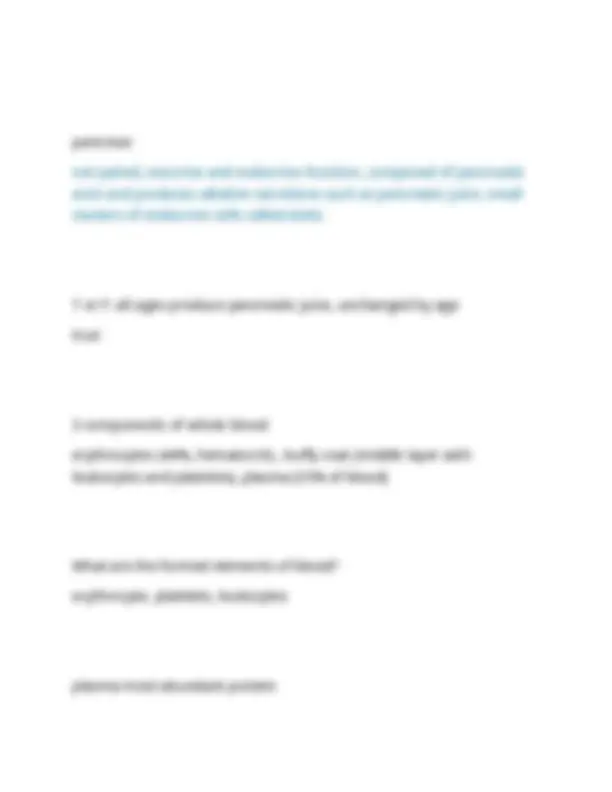

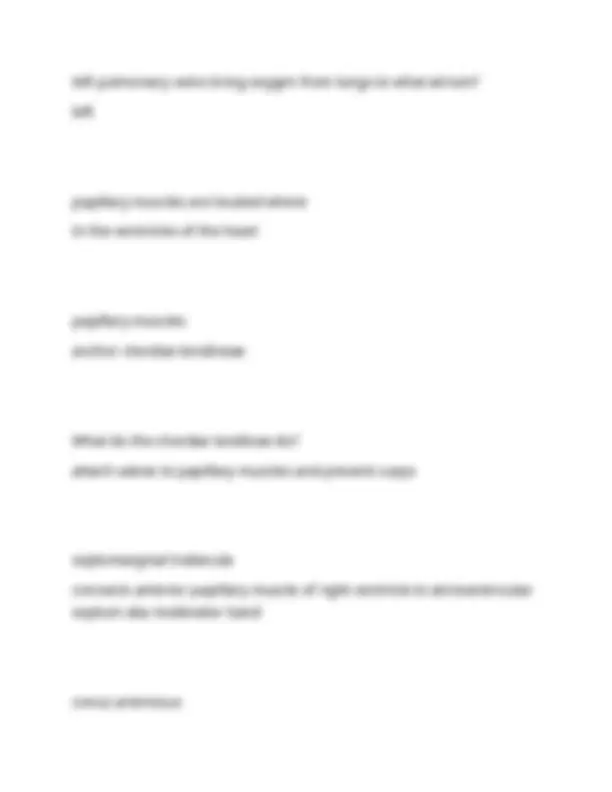
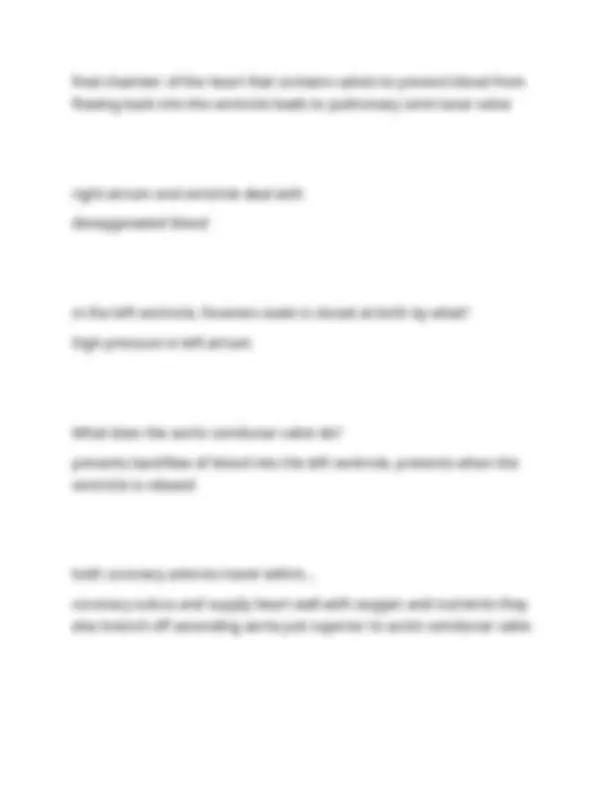
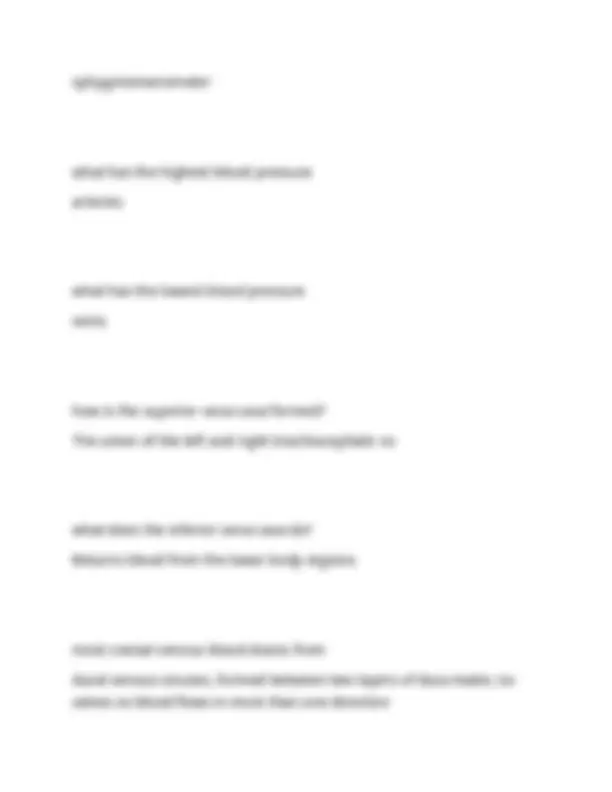
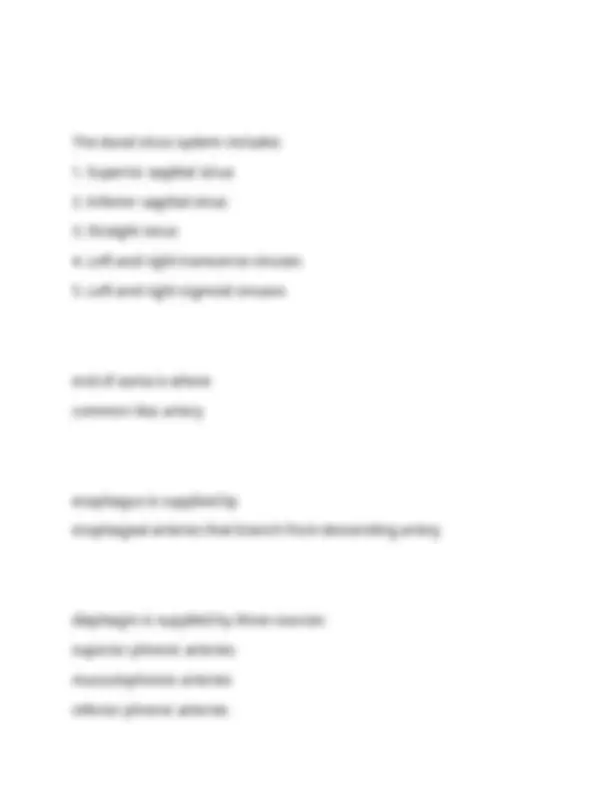
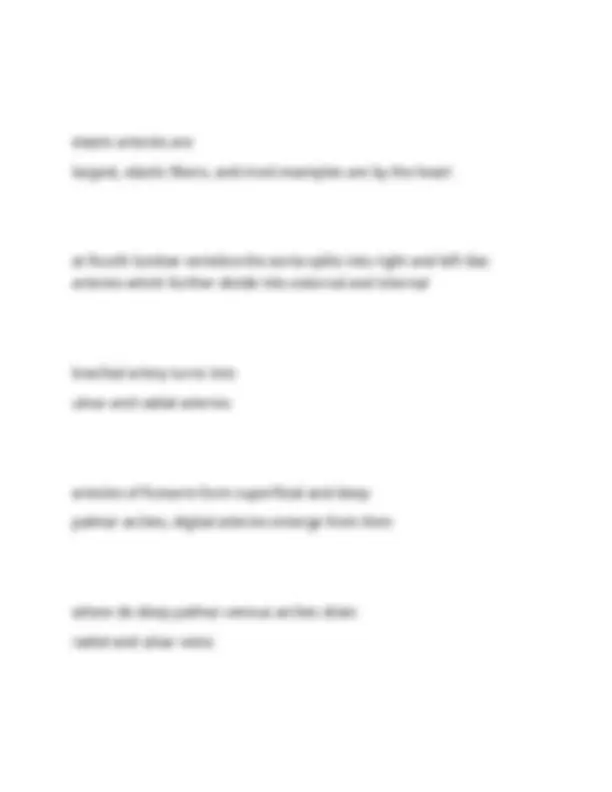
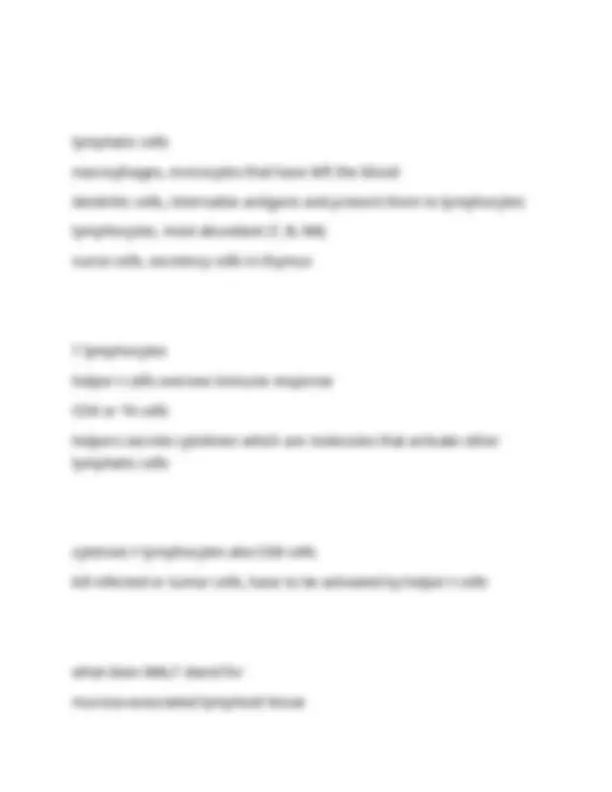
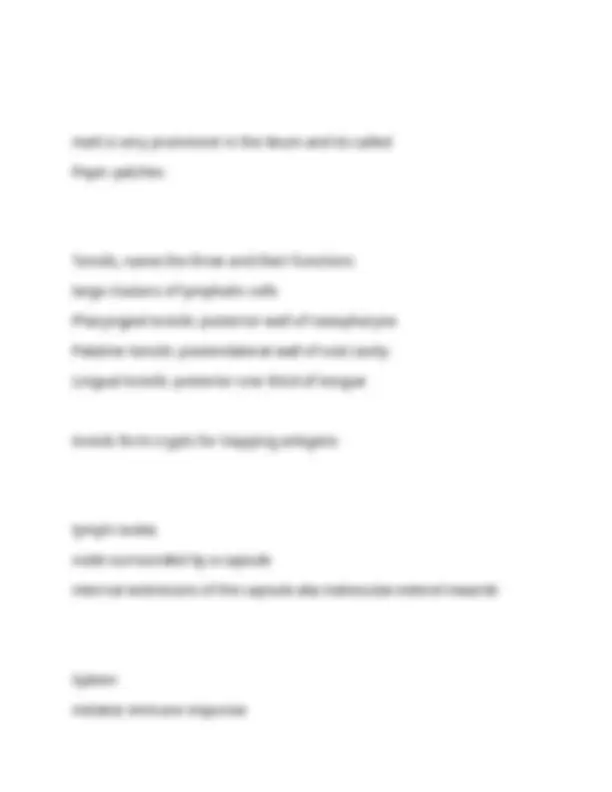
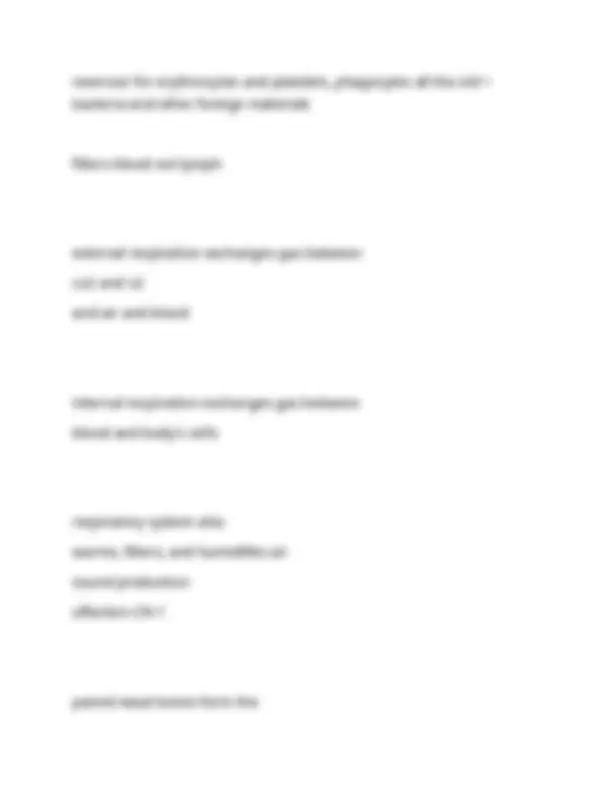
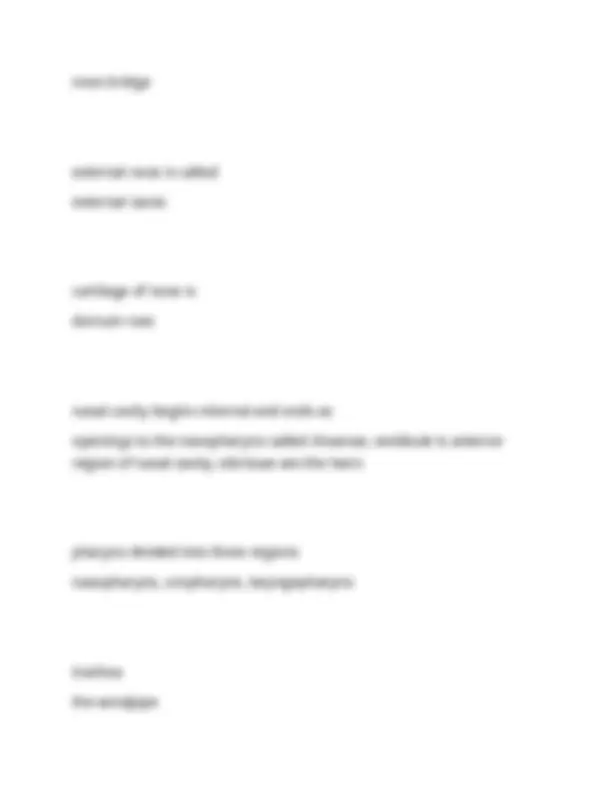
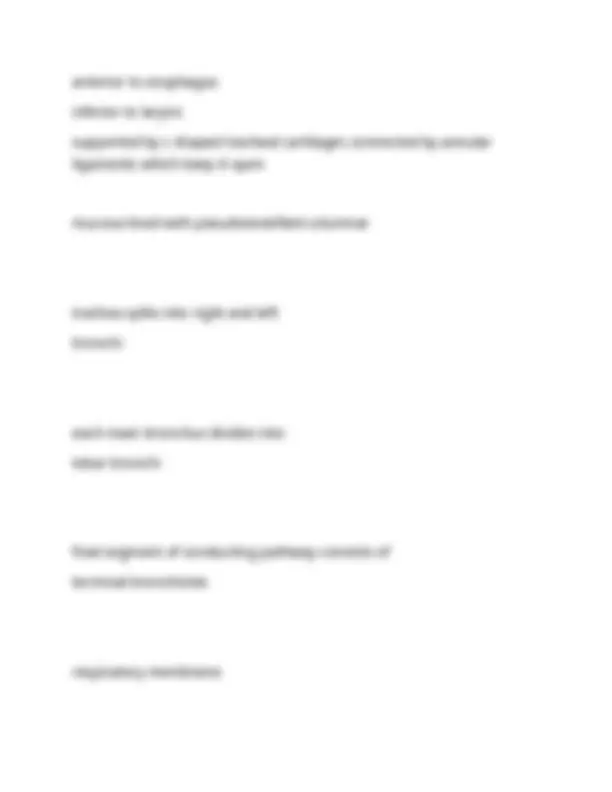
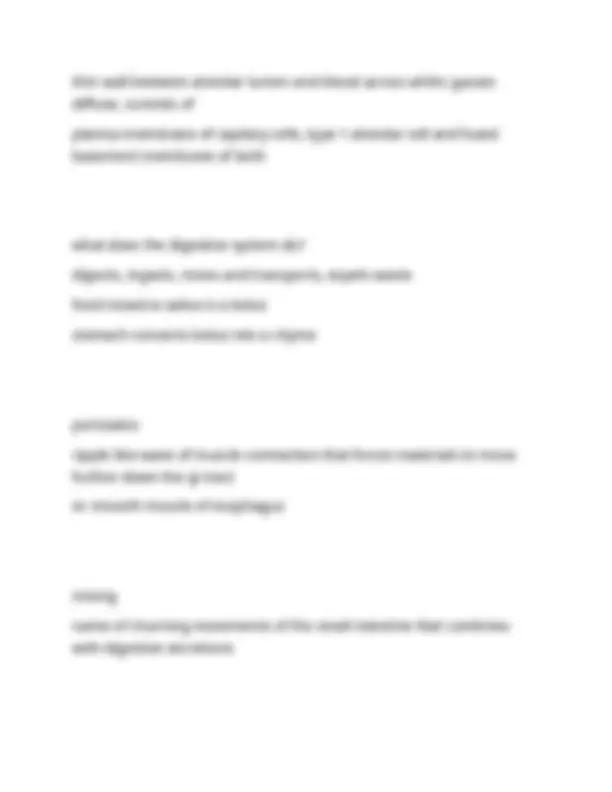
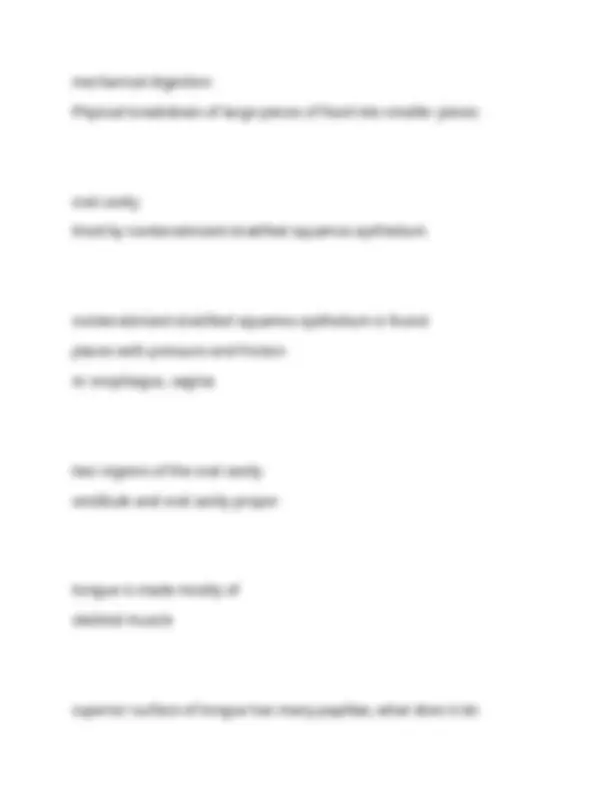
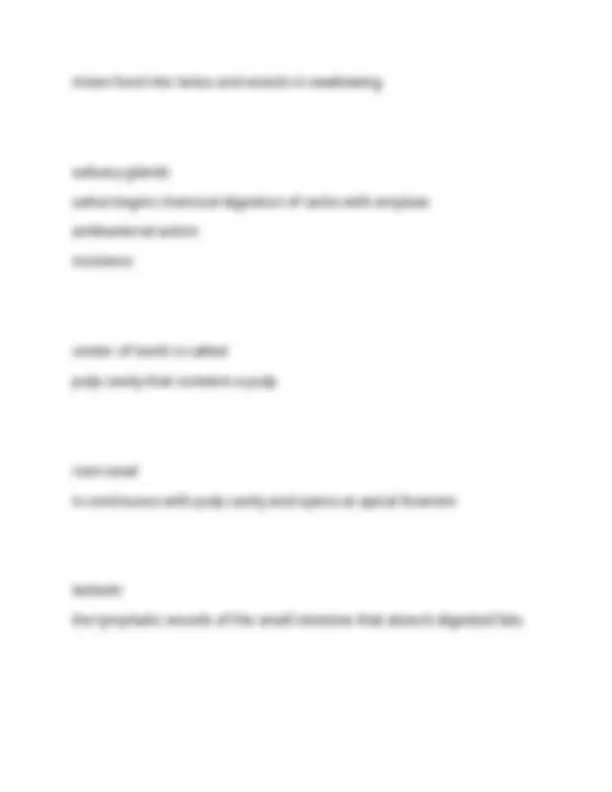
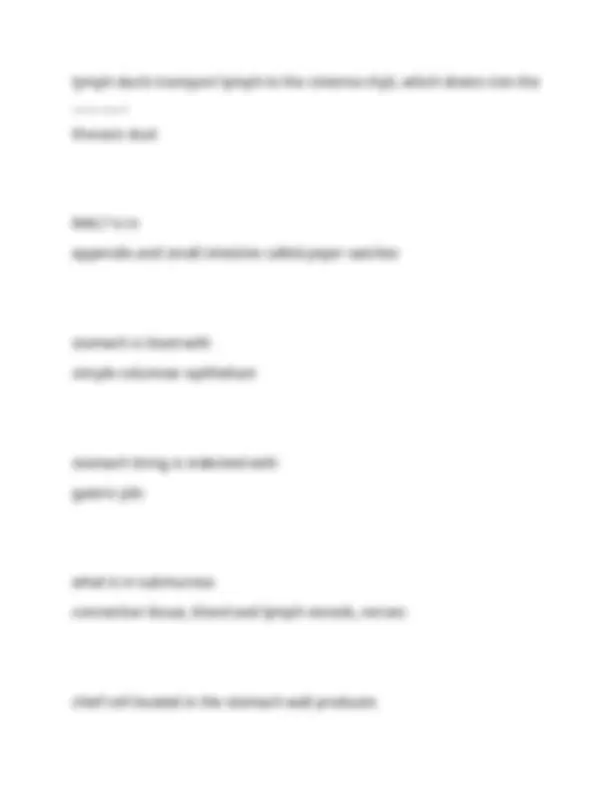
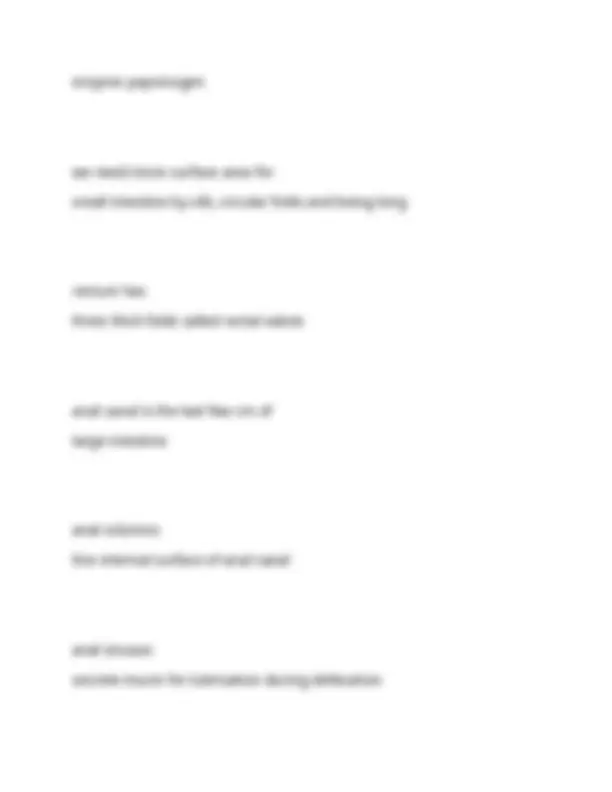
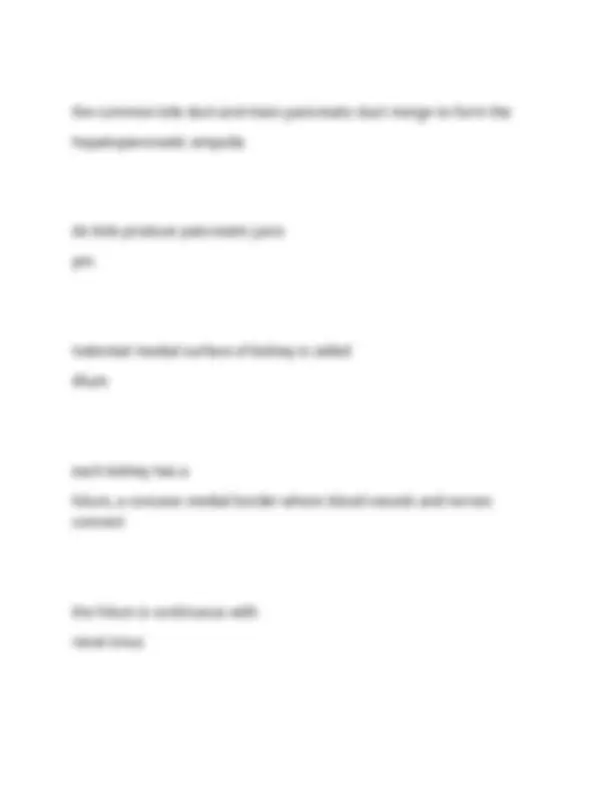
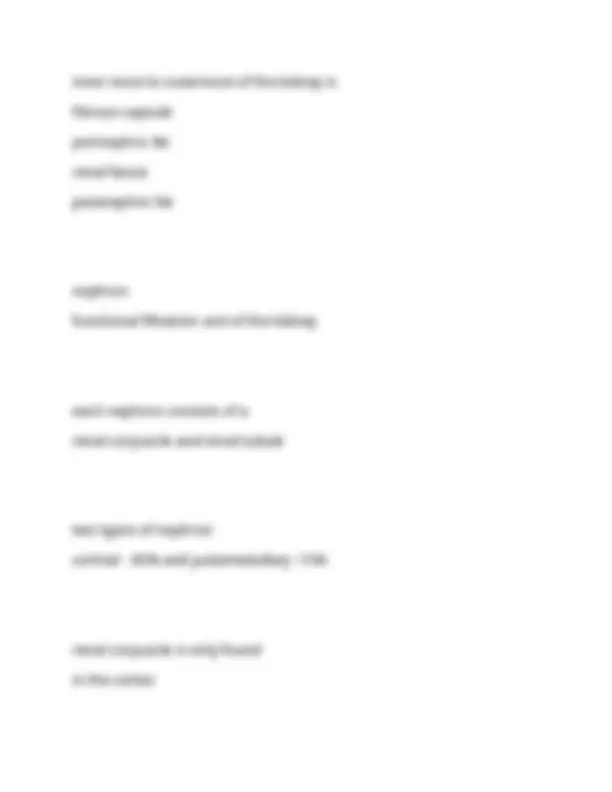
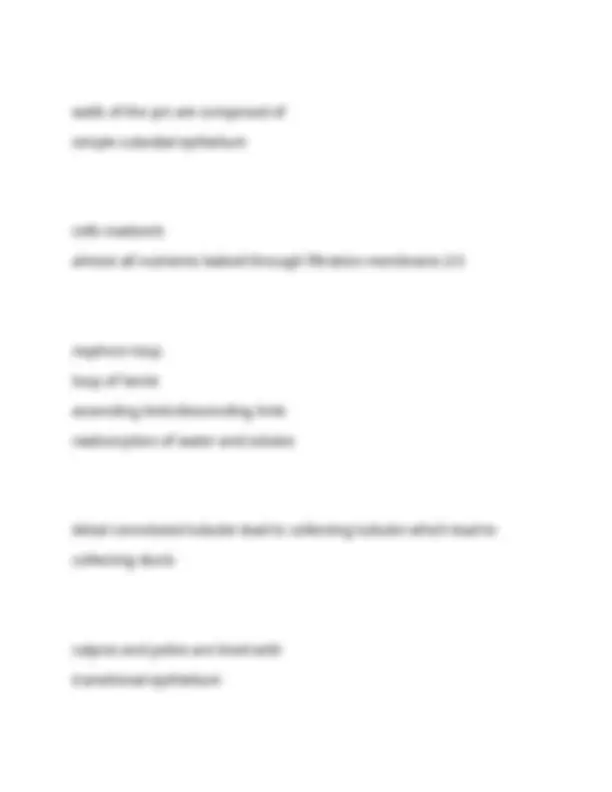
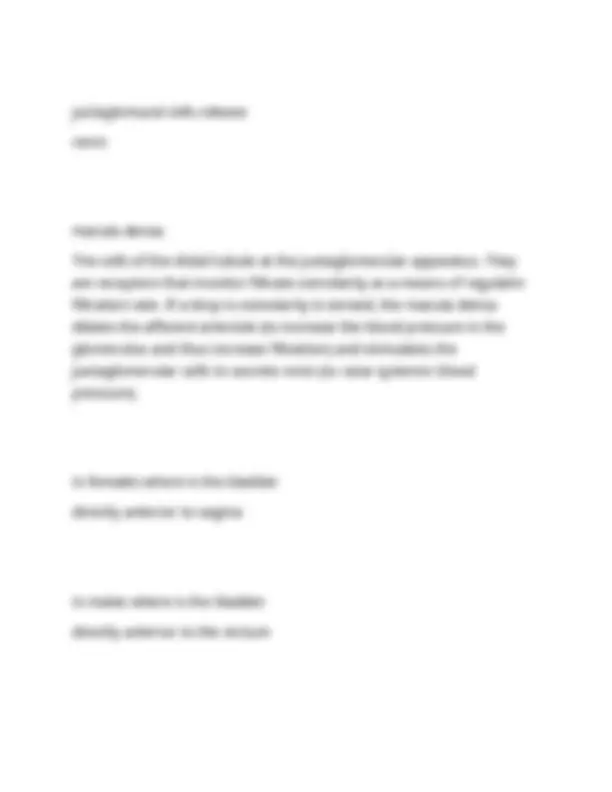
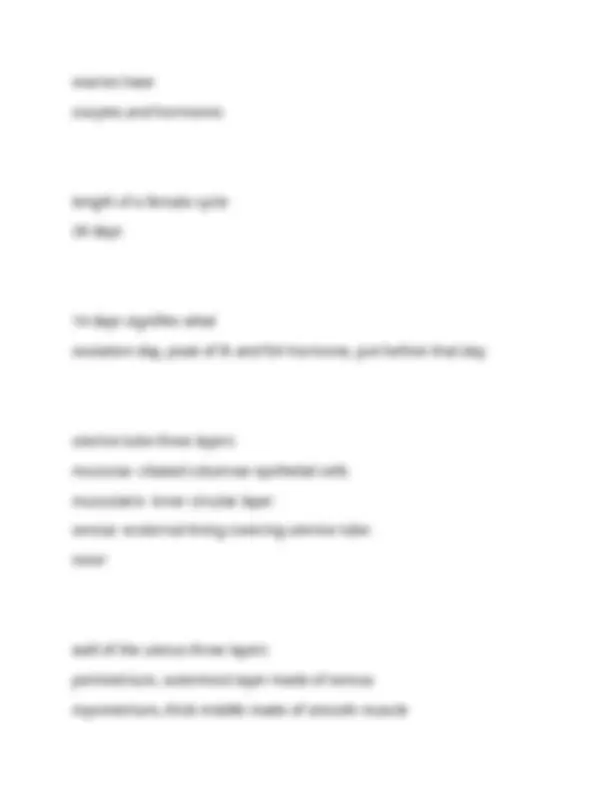
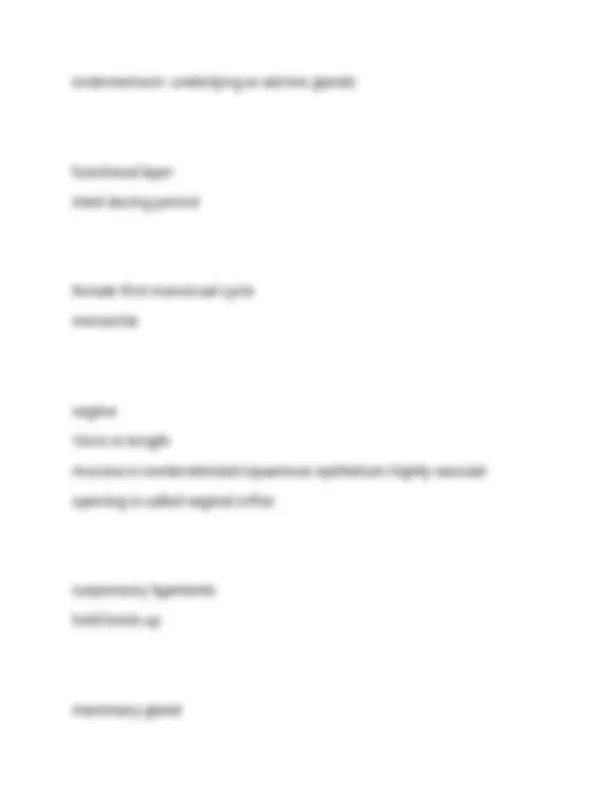
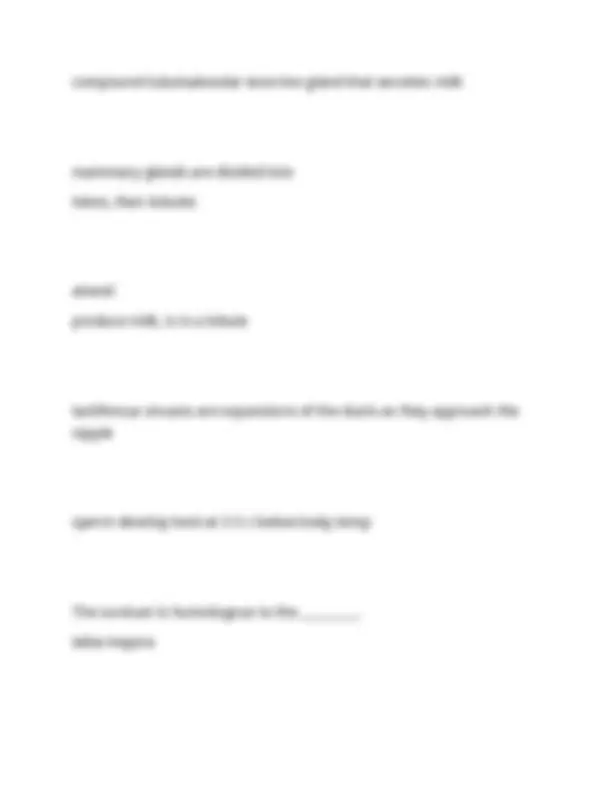
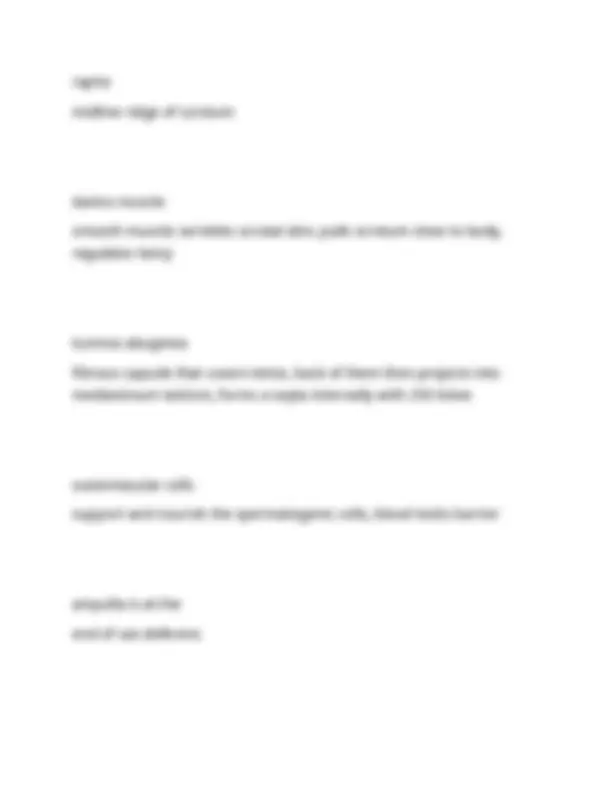
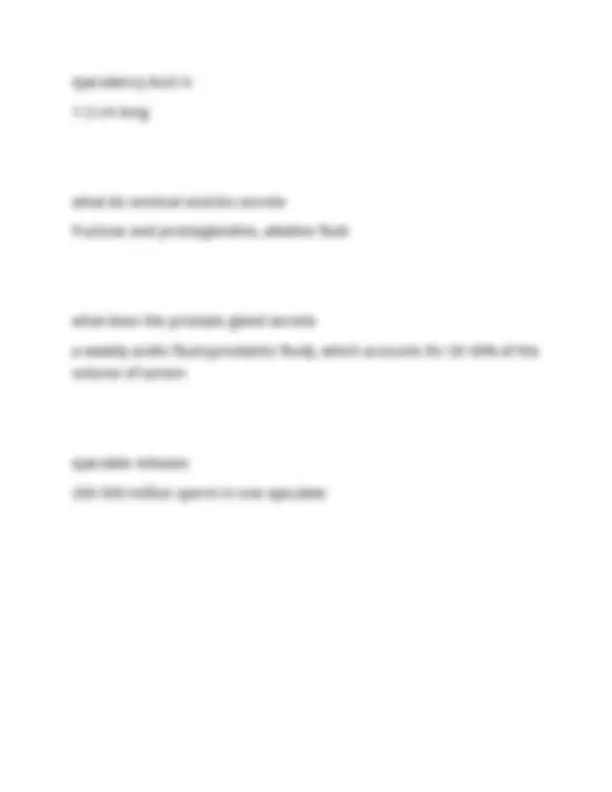


Study with the several resources on Docsity

Earn points by helping other students or get them with a premium plan


Prepare for your exams
Study with the several resources on Docsity

Earn points to download
Earn points by helping other students or get them with a premium plan
Community
Ask the community for help and clear up your study doubts
Discover the best universities in your country according to Docsity users
Free resources
Download our free guides on studying techniques, anxiety management strategies, and thesis advice from Docsity tutors
ANATOMY LECTURE FINAL REVIEW STUDY GUIDE EXAM 2025 WITH 170 QS AND ELABORATED AS|A+ RATED
Typology: Exams
1 / 36

This page cannot be seen from the preview
Don't miss anything!





























what do endocrine glands do? release hormones into the bloodstream, maintain homeostatis and make up the endocrine glands * IS SLOW all endocrine organs have extensive distribution of many___ blood vessels paired endocrine glands: adrenal glands, parathyroid glands unpaired endocrine glands: pituitary, pineal, thyroid, thymus What is the hypothalamus?
controls homeostasis and pituitary gland, secretes releasing/inhibiting hormones, produces oxytocin and ADH what releases oxytocin and ADH posterior pituitary what does the hypothalamus stimulate? adrenal medulla by exciting sympathetic ns pituitary is also known as... and where is it found? hypophysis, found within Sella turcica how many hormones does the anterior pituitary secrete? list them. TSH (thyroid stimulation), LH (ovulation) FSH (follicle stimulation) GH (growth hormone), MSH (melanin synthesis) , ACTH (adrenal cortex release of corticosteroids), PRL (mammary gland)
thyroid gland 3 hormones released from thyroid gland: T4, T3, calcitonin where is the thyroid gland located? below the larynx, inferior to thyroid cartilage shape of thyroid gland butterfly shaped, divided by isthmus parathyroid hormone is produced by parathyroid glands what is important about parathyroid hormone? antagonist to calcitonin by increasing calcium levels in the blood and targets the kidney and bone
pancreas not paired, exocrine and endocrine function, composed of pancreatic acini and produces alkaline secretions such as pancreatic juice, small clusters of endocrine cells called islets. T or F: all ages produce pancreatic juice, unchanged by age true 3 components of whole blood erythrocytes (44%, hematocrit) , buffy coat (middle layer with leukocytes and platelets), plasma (55% of blood) What are the formed elements of blood? erythrocyte, platelets, leukocytes plasma most abundant protein
where is the heart located? mediastinum, enclosed in pericardium which limits the heart so it only moves within the thorax heart wall structure epicardium (visceral layer of serous pericardium) , myocardium (thickest and for contraction) , endocardium (simple squamos epithelium) How many chambers does the heart have? 4 (2 atria, 2 ventricles) The heart has four valves -Two atrioventricular valves (closure causes lubb) -Two semilunar valves at base of great arteries (closure causes dupp)
all valves have.. one directional flow arteries contain deoxygenated blood, or low oxygenated blood umbilical arteries pulmonary arteries right ventricle receives what from right atrium deoxygenated blood intraventricular septum thick wall between right and left ventricles Inner wall of each ventricle displays irregular muscular ridges called trabeculae carneae - both ventricles
final chamber of the heart that contains valves to prevent blood from flowing back into the ventricle leads to pulmonary semi lunar valve right atrium and ventricle deal with deoxygenated blood in the left ventricle, foramen ovale is closed at birth by what? high pressure in left atrium What does the aortic semilunar valve do? prevents backflow of blood into the left ventricle, prevents when the ventricle is relaxed both coronary arteries travel within... coronary sulcus and supply heart wall with oxygen and nutrients they also branch off ascending aorta just superior to aortic semilunar valve
wall of arteries and veins have how many layers 3 tunics tunica intima composed of endothelium (simple squamos lining) and subendothelial layer of areola connective tissue tunica media circular arranged smooth muscle, causes smooth muscle to contract resulting in vasoconstriction tunica externa outer connective tissue that anchors blood vessels to surroundings large or thick blood vessels require what vaso vasorum, their own network of small blood vessels in their outer layer
sphygmomanometer what has the highest blood pressure arteries what has the lowest blood pressure veins how is the superior vena cava formed? The union of the left and right brachiocephalic vv. what does the inferior vena cava do? Returns blood from the lower body regions most cranial venous blood drains from dural venous sinuses, formed between two layers of dura mater, no valves so blood flows in more than one direction
The dural sinus system includes
at cubital fossa, the radial and ulnar veins merge to form brachial veins brachial veins merge with basillic vein to form axillary vein which transforms into subclavian vein how does the deep femoral artery supply the hip joint? medial and lateral circumflex arteries when the femoral artery enters the posterior popliteal fossa it becomes popliteal artery, which divides into posterior and anterior tibial arteries lymph vessels return fluid to venous circulation, if not removed it causes edema lymphatic capillaries
closed-ended tubes interspersed among most blood capillary beds, not in red bone marrow or avascular tissues, one way entry flaps five main classes of immunoglobulins
malt is very prominent in the ileum and its called Peyer patches Tonsils, name the three and their functions large clusters of lymphatic cells Pharyngeal tonsils: posterior wall of nasopharynx Palatine tonsils: posterolateral wall of oral cavity Lingual tonsils: posterior one third of tongue tonsils form crypts for trapping antigens lymph nodes node surrounded by a capsule internal extensions of the capsule aka trabeculae extend inwards Spleen initiates immune response
reservoir for erythrocytes and platelets, phagocytes all the old + bacteria and other foreign materials filters blood not lymph external respiration exchanges gas between co2 and o and air and blood internal respiration exchanges gas between blood and body's cells respiratory system also warms, filters, and humidifies air sound production olfaction CN- paired nasal bones form the